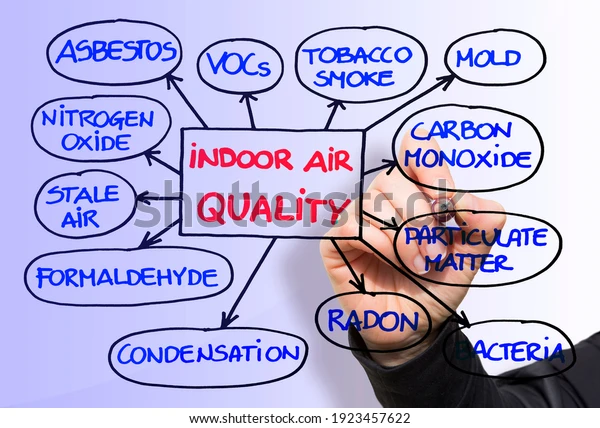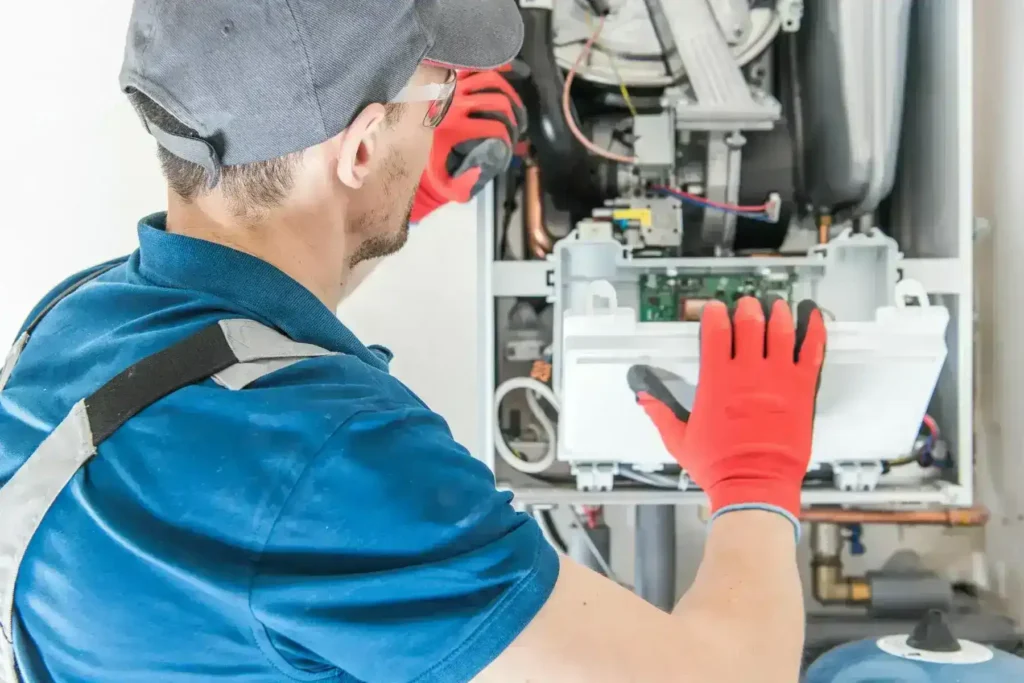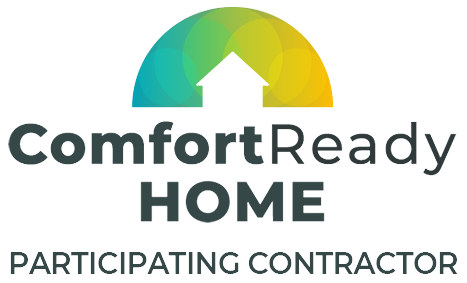Take Control of Your Home’s Air Quality Today—Call for Options


When Sarah moved into her charming 1960s ranch house near Lake Washington, she loved everything about it—the wide windows, the original hardwood floors, and the soft breeze off the water that made the summer heat bearable. But by mid-June, that breeze came with something extra: humidity. A lot of it.
It started with a musty smell in the basement. Then the windows fogged up even when the AC was running. Her bathroom towels never seemed to dry, and her wood floors—once smooth and rich—started to feel tacky under her bare feet. Even her dog, Max, seemed sluggish and uncomfortable.
One morning, while dusting, Sarah noticed tiny spots on the ceiling in the living room. “Is that… mold?” she muttered in disbelief. That was the tipping point.
She called Fast HVAC. The technician who came out did a full inspection and explained that the humidity levels inside the house were hovering around 65%—much higher than the ideal range of 30%–50%. Her air conditioner was working hard, but cooling and dehumidifying were not the same thing.
“What you really need,” he said, “is a whole-home dehumidifier. It works with your HVAC system to pull excess moisture from the air before it ever becomes a problem.”
At first, Sarah hesitated—it sounded like a big investment. But after weighing the risks of mold, warped flooring, and poor indoor air quality, she decided to go for it.
The installation was done in a day. By the end of the week, the musty smell was gone, the house felt crisper, and even her towels started drying properly. She could breathe deeper, sleep better, and Max? He got his bounce back. “This place finally feels like home,” Sarah said.
If a home has excess indoor humidity, it can lead to a wide range of issues—from discomfort to serious health and structural problems. Here are the most common symptoms
Persistent, damp, or “basement smell” throughout the home or in specific areas. There is often a sign of mold or mildew growth due to high moisture levels.
Foggy or wet windows (especially in the mornings). This indicates that humidity is building up faster than your HVAC system can remove it.
Visible mold on walls, ceilings, or around windows. Even small spots can indicate a moisture problem—and mold can spread quickly.
Indoor relative humidity consistently above 50–60%.
Your air conditioner may cool the air but struggle to remove enough moisture.
High humidity can cause wood to absorb moisture and change shape, leading to sticking doors, buckling floors, or damaged cabinets or furniture
High humidity supports dust mites, mold spores, and bacteria, which can trigger asthma attacks, sinus irritation, or persistent coughing or sneezing
Even when the AC is on, the air feels sticky, heavy, or uncomfortable. Laundry, towels, or bedding may take longer to dry.
Many insects (like silverfish, cockroaches, and termites) thrive in moist environments.
At Fast HVAC, we specialize in creating healthier, more comfortable homes—starting with the air you breathe. As your trusted HVAC experts, we offer top-quality whole-house dehumidifier systems designed to combat wet indoor air and improve your everyday comfort. Our team installs industry-leading dehumidifiers that work seamlessly with your existing HVAC system to maintain ideal humidity levels in every room, all season long.
Whether you’re looking to improve indoor air quality, protect your home’s finishes, or simply sleep better at night, our knowledgeable technicians are here to guide you to the perfect solution. We make it easy, efficient, and worry-free.




When our HVAC technician helps a homeowner select the right whole-house dehumidifier, they consider a mix of technical factors and homeowner needs to ensure the system provides the right amount of humidity—not too little, and not too much. Here’s a breakdown of how they make that decision:
The larger the home, the more air volume there is to dehumidify. A general rule of thumb is 30–50 pints/day for homes up to 2,000 sq. ft, and 70–100+ pints/day for larger homes or extremely humid conditions.
Using a hygrometer or smart thermostat, our tech measures the relative humidity (RH) throughout the home. The ideal RH is 30%–50%. Readings consistently above that suggest a higher-capacity unit may be needed.
Poor insulation or leaky doors/windows allow outdoor humidity to seep in. Basements and crawlspaces are often trouble spots. A home that allows a lot of moisture in needs a dehumidifier with higher capacity.
The technician makes sure the dehumidifier can be integrated with the existing forced-air system. They then check for proper airflow and space in the ductwork, as some units need dedicated return/supply ducting.
Kitchens, bathrooms, laundry rooms, indoor pools, and basements all contribute to the moisture load. Even a large family or frequent cooking/laundry can increase humidity indoors.
Dehumidifiers are typically rated by pints of water removed per day (PPD). Techs often use load calculators or software to find a unit with the right PPD capacity, Airflow (CFM – cubic feet per minute), Ducting requirements, and efficiency rating
If the homeowner is concerned with allergies, mold, or health issues, they may want advanced filtration or smart controls. Some dehumidifiers come with integrated humidistats, remote controls, or Wi-Fi connectivity.
Even a perfectly sized dehumidifier won’t work well if it’s poorly installed. HVAC pros ensure proper drainage (to a floor drain or pump), smart thermostat integration (if needed), and correct placement in the duct system for balanced air distribution
We are authorized dealers and installers of the most common and trusted humidification systems.







We treat your home with the utmost care, ensuring no dings, scratches, or mess during installation.
Your confidence in us is our top priority, and we take that responsibility seriously.

A whole-house dehumidifier is a system that removes excess moisture from the air throughout your entire home. It connects directly to your HVAC system or operates independently with its own ductwork, helping maintain ideal indoor humidity levels all year round.
Several ways. A whole-house dehumidifier covers the whole house, not just one room, automatically drains water, no need to empty a tank, is quieter and more energy-efficient, and integrates with your thermostat or smart home system. Portable units are good for spot dehumidifying but can’t match the power, efficiency, or convenience of a whole-home system.
You might need a whole-house dehumidifier if you notice musty smells, foggy windows, mold or mildew, sticky or clammy air, allergy flare-ups, wood floors or doors warping, or high humidity levels. This means your air conditioner isn’t removing enough moisture on its own—especially in humid climates or during rainy seasons.
The ideal indoor relative humidity (RH) is 30%–50%. Too high, and you risk mold, dust mites, and discomfort. Too low, and you may get dry skin, static shocks, and irritated sinuses.
They will consider square footage, climate and seasonal humidity, home insulation and air leakage, sources of moisture (basement, cooking, showers, etc.), and existing HVAC system and airflow. Proper sizing ensures the unit is powerful enough without overworking.
In most cases, yes. Whole-home dehumidifiers are designed to work with existing forced-air systems or as stand-alone units with dedicated ductwork. A professional installer will confirm compatibility.
Whole-house dehumidifiers use electricity, but they can actually help lower cooling costs. Drier air feels more comfortable at higher temperatures, so you may not need to run your AC as much.
Very little. Be sure to clean or replace the air filter every 6–12 months, and ensure the drainage system is clear and working. Periodic inspection by an HVAC technician is recommended.
Typical installed costs range from $1,500 to $3,500, depending on unit capacity (measured in pints/day), brand and model, installation complexity, and home size.
Yes. By reducing excess moisture, a whole-house dehumidifier limits the growth of mold and mildew, dust mites, bacteria, and viruses. This helps improve indoor air quality and reduce respiratory irritation.
With proper maintenance, they typically last 8 to 15 years.
Yes, especially in humid climates. But many systems are only needed during spring, summer, and early fall, when humidity is highest.
Our family-owned business has proudly served homeowners in the greater Seattle area since 1982. We are active members of the community: We drive in the same frustrating traffic, we support the local community, and we all enjoy the same recreational opportunities together.
No matter the current humidity inside your house, or your reaction to it, our certified technicians are ready to assist. We understand how poor air quality effects health, so we provide thoughtful solutions to your family’s circumstances.



Let’s bring your vision to life with expert craftsmanship and thoughtful design.
16120 Woodinville Redmond Rd NE STE. 15
Woodinville, WA 98072
(206) 558 5112
hello@fastwaterheater.com
Monday – Friday 7:30am-5pm
24/7 Emergency Service Available
HVAC License
NORDSHA772L2
Electrical License
NORDSHA774MR





